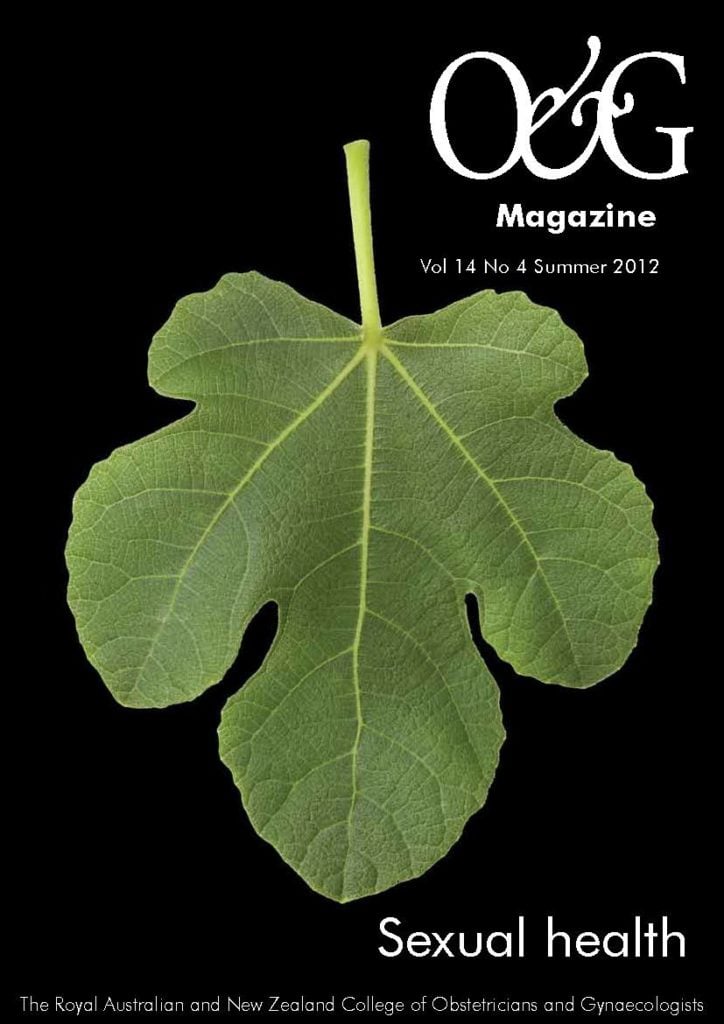Had time to read the latest journals? Catch up on some recent O and G research by reading these mini-reviews by Dr Brett Daniels.
Ovarian cancer staging
The authors of this study sought to determine whether there was a benefit to comprehensive surgical staging in women with ovarian cancer that grossly appeared to be confined to the ovary. Surgical staging for ovarian cancer comprises exploratory laparotomy, peritoneal washings, total abdominal hysterectomy, bilateral salpingo-oophorectomy, bilateral pelvic and para-aortic lympadenectomy and peritoneal biopsies. With laparoscopic treatment of early-stage ovarian cancer becoming more common, the authors sought investigate whether complete staging had advantages over less comprehensive surgery. In particular, they were concerned that laparoscopy may not be as sensitive as laparotomy in identifying metastatic disease, especially in peritoneum overlying small bowel mesentery. The study was a retrospective design including 86 women who had undergone surgical staging for ovarian cancer where the disease appeared grossly to be confined to the ovaries. They found that 29 per cent of these patients were upstaged after pathological examination, 17 per cent with disease in the peritoneal, omental or adhesion biopsies, six per cent with disease in lymph nodes and six per cent with disease in the uterus or Fallopian tubes. The authors reported that in their study the location of the positive peritoneal and adhesion biopsies were all in areas easily accessible by a laparoscopic approach. In the same issue, a panel of gynaecological oncology consultants and Fellows discuss the study. While agreeing that comprehensive surgical staging would be their choice for these patients, and that laparoscopic staging was reasonable they commented on the limitations of a retrospective study. In particular, they noted that it can be difficult to gather information from operation notes. In this study it was not explicitly stated what criteria were used to determine the number and location of biopsies.
Garcia-Soto AE, Boren T, Wingo SN et al. Is comprehensive surgical staging needed for thorough evaluation of early-stage ovarian carcinoma? Am J Obstet Gynecol 2012; 206:242.e1-5.
Cranberries and urinary tract infection
Urinary tract infections (UTIs) are a relatively common clinical problem, with about ten per cent of women experiencing at least one infection in a year. Some women unfortunately experience recurrent UTIs and various methods have been used to prevent them. Cranberry products have previously been shown to be effective in the prevention and treatment of UTIs. It is thought that the mechanism of action is of cranberry by prevention of the adhesion of bacteria (especially Escherichia coli) to uroepithelial cells. Cranberry products are available as juice, syrup, capsules or tablets. According to the authors there is some concern that processed cranberry products contain reduced levels of the active ingredients proanthocyanidins compared to juices. The authors have previously published Cochrane reviews on cranberry products in 1998, 2004 and 2008. Their current paper aggregates data from 24 studies with a total of 4 473 participants. Their previous review, in 2008, included only ten studies. Of the 24 studies, 11 were not included in the meta-analysis due to design issues. The results of the meta-analyses showed that, compared with placebo, water or no treatment, cranberry products did not significantly reduce the incidence of urinary tract infections in women with recurrent UTIs, pregnant women or any other subgroup of participants included in the analysis. The authors conclude that the publication of large negative studies since their last review accounts for the difference in results between the two reviews. Interestingly, the authors also report that many participants found stopped drinking the cranberry juice during studies, raising questions of its acceptability to women.
Jepson RG, Williams G, Craig JC. Cranberries for preventing urinary tract infections. Cochrane Database of Systematic Reviews 2012, Issue 10.Art. No.: CD001321. DOI: 10.1002/14651858.CD001321.pub5.
LLETZ and preterm birth
An increased risk of preterm birth following cervical procedures, including large loop excision of the transformation zone (LLETZ), is a standard part of the information provided to women prior to treatment for cervical dysplasia. This study examined the records of 44 000 women who had either a cervical punch biopsy or excisional treatment between 1987 and 2009. Of these women, 4776 had singleton births prior to their cervical cytology, while 14 265 gave birth after cytology. In the study, 1078 women had singleton births before and after their cytology, allowing a within woman analysis of preterm birth in this group. For the group of births after histology nine per cent were preterm, while 6.7 per cent were preterm in births prior to histology. The relative risk for preterm delivery after biopsy only was 1.33 (95 per cent CI 1.04-1.70), while for treatment (LLETZ or cone) the relative risk was (95 per cent CI 1.15-1.83). In the within woman analysis including only women who had actually given birth before and after cervical excisional treatment the relative risk for preterm delivery was 0.94 (95 per cent CI 0.62-1.43). The authors comment that the rate of preterm delivery following cervical biopsy is lower in their study than in previous papers, however, their results do provide a more reassuring expectation for women requiring treatment for cervical dysplasia.
Castanon A, Brocklehurst P, Evans H et al. Risk of preterm birth after treatment for cervical intraepithelial neoplasia among women attending colposcopy in England: retrospective-prospective cohort study. BMJ 2012; 345: e5174.





Leave a Reply